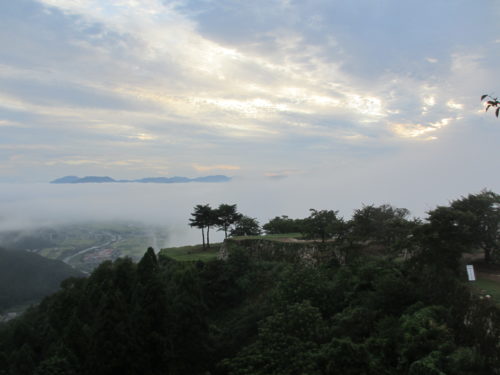With a unique background as a train conductor for Kintetsu Railway—a major Japanese rail company—and years of road-tripping experience in his 20s, this writer shares insights to help international visitors discover the real charm of Japan. Originally from Nara and now based in Osaka, he runs a rental car business offering manual-transmission and custom Japanese cars. From early morning rentals to tailored drive plans, he brings a playful spirit to travel. Having explored scenic routes across Japan, especially in Shikoku and Nagano, he delivers authentic, experience-based content as a true expert in tourism and driving.
Most journeys through Japan follow a celebrated path: the "Golden Route." It's a magnificent trail connecting the futuristic metropolis of Tokyo, the imperial grace of Kyoto, and the vibrant energy of Osaka. But beyond the glow of this well-trodden route lies another Japan—a land of mist-shrouded castles, sweeping coastal deserts, and ancient shrines where myths feel palpably present. This is the Japan of the San'in region, a ruggedly beautiful coastline along the Sea of Japan.
This guide is your key to unlocking that other Japan. It's a meticulously planned 3-day, 2-night road trip itinerary starting from Osaka, designed to take you deep into the heart of the country's spiritual and natural wonders. We will swap crowded train platforms for winding coastal roads, neon-lit nights for star-filled skies, and tourist hubs for sacred sites where the gods themselves are said to gather. Our journey will lead us to three extraordinary pillars of Japanese culture: a castle that floats on a sea of clouds, a desert landscape that tumbles into the ocean, and a grand shrine that sits at the very heart of Japan's creation mythology.
To truly embrace this adventure, one mode of transport stands above all others: the car. A road trip offers an unparalleled sense of freedom and access to experiences that are difficult, if not impossible, to orchestrate via public transport. The magic of this itinerary lies in its early starts and spontaneous detours—the ability to be at a mountain peak before dawn to witness a miracle of nature, or to follow a scenic road just to see where it leads. This journey is not just about the destinations; it's about the drive itself.
More Than a Rental: Choosing a Car That's Part of the Japanese Experience
The car you choose for a Japanese road trip shouldn't be a mere utility; it should be an extension of the adventure. It's the vessel that carries you between worlds, from the urban sprawl to the sacred grove. While any car can get you from point A to B, the right car enhances every moment of the journey. Imagine tackling the mountain roads to Takeda Castle not in a generic sedan, but in a vehicle with a story—a piece of Japanese automotive culture famous from films like The Fast and the Furious. This is where the experience transcends simple travel and becomes a genuine cultural immersion.
The Deep Seek Japan Difference: Tailored for the True Explorer
For the traveler who seeks more than just a ride, a specialized rental service can transform the entire trip. The philosophy is simple: provide not just a car, but a curated driving experience. This means offering vehicles that are part of Japan's celebrated car culture and services designed around the specific needs of an adventurous itinerary.
Here are the key elements that make a difference:
- Authentic Japanese Cars: The opportunity to drive a custom Japanese Domestic Market (JDM) car is a thrill for any enthusiast. For those who appreciate a more connected driving experience, finding a manual transmission rental in Japan is a rare treat. It puts you in direct control, making the winding coastal and mountain roads of this trip all the more engaging.
- Early Starts, Late Returns: A standard rental car office operates on a strict 10 am to 7 pm schedule. But adventure doesn't keep office hours. To witness the sea of clouds at Takeda Castle, you need to be on the road long before sunrise. A service offering optional early-morning pickups (e.g., 7 am) and late-night drop-offs is invaluable, removing the stress of rushing back and allowing you to maximize your time at each location.
- Peace of Mind on Country Roads: Driving on unfamiliar scenic routes can be daunting, with the risk of stone chips from passing trucks. Renting a car with a Paint Protection Film (PPF) on the hood provides an extra layer of security, letting you enjoy the drive without worrying about minor cosmetic damage.
- The Insider's Map: A GPS can show you the way, but it can't show you the soul of a route. Receiving a custom-made drive map—a physical document with curated stops, scenic viewpoints, and a link to a corresponding Google Map—is like having a local expert in the passenger seat. It’s a tangible piece of E-E-A-T (Experience, Expertise, Authoritativeness, and Trustworthiness) that elevates the journey from a self-guided tour to a guided adventure.
Choosing a service like this shifts the value proposition. It's no longer about the commodity of a car rental; it's about investing in a richer, more authentic, and seamless travel experience.
Day 1: From Urban Energy to Tajima's Tranquil Gateway
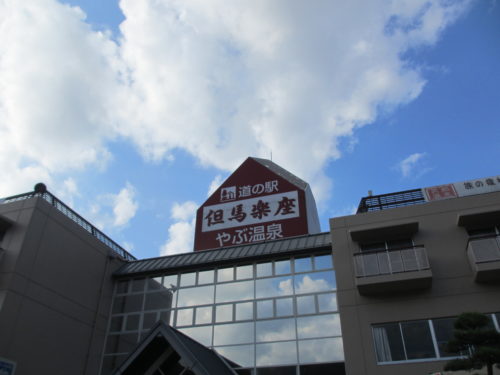
Day 1: Leaving Osaka's Bustle for the Gateway to the Sea of Japan
The journey begins. As you navigate the dense web of expressways leaving Osaka, the cityscape gradually gives way. The towering skyscrapers recede in the rearview mirror, replaced by the rolling, green hills of northern Hyogo Prefecture. The air changes, the pace slows, and the sense of adventure truly begins to build. Your destination for the first night is not just a place to sleep, but a perfect introduction to the culture of Japanese road travel.
Destination: Michi-no-Eki Tajima Rakuza – More Than a Rest Stop
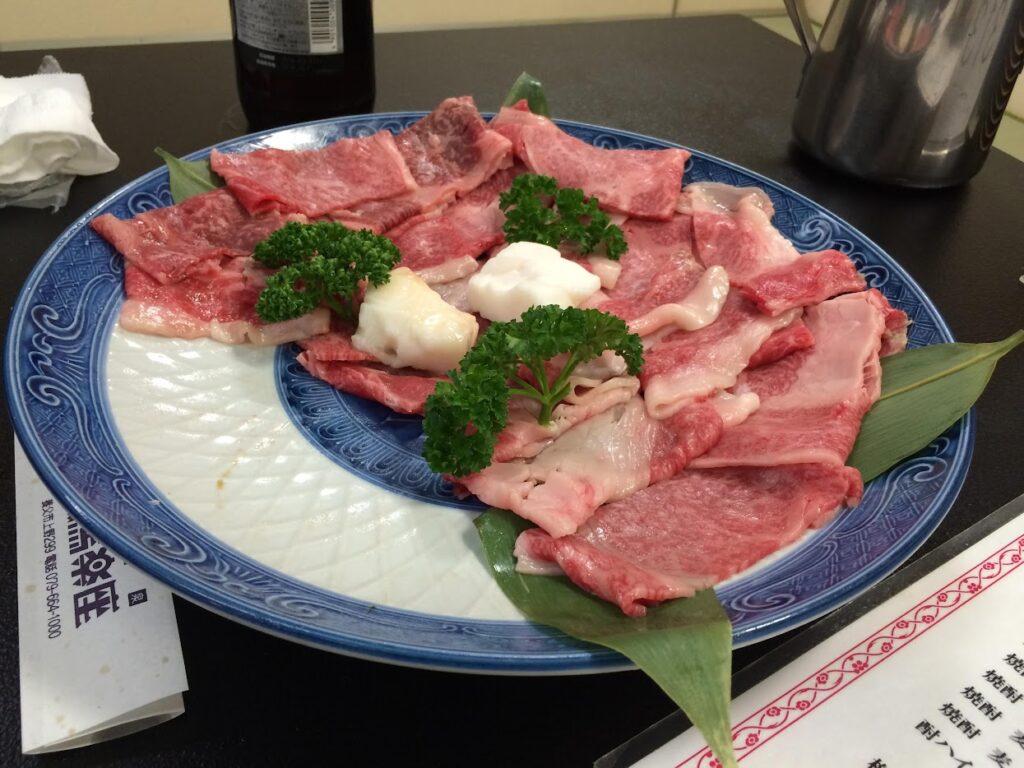
In the West, a roadside stop is often a purely functional place for fuel and a quick snack. In Japan, it can be a destination in itself. Welcome to the world of the michi-no-eki (roadside station). These government-designated facilities are vibrant hubs of local culture, cuisine, and community. Your first stop, Michi-no-Eki Tajima Rakuza in Yabu City, is a prime example, offering everything you need for a perfect first night in one convenient location.
Relax: A Soak in a Natural Onsen After a few hours on the road, there is no better way to unwind than by soaking in a natural hot spring, or onsen. Tajima Rakuza features an on-site public bath called "Yuyu Mikaku," where you can soothe your muscles in mineral-rich waters and let the stress of the city melt away. It's an authentic Japanese experience and the ideal preparation for the adventures of the days ahead. The facility is open until late in the evening, typically 10 pm.
Dine: A Taste of World-Famous Tajima Beef The Tajima region is the origin of the legendary beef that includes the world-renowned Kobe beef. At Tajima Rakuza, you don't have to go far to sample this delicacy. The on-site restaurant, "Yabu Bokujo," specializes in serving authentic Tajima beef directly from the source. You can indulge in classic preparations like a sizzling
sukiyaki or shabu-shabu hot pot, or try local specialties like the "Ushi Aburi Toro Tamago Don" (seared fatty beef and egg over rice). This isn't just a meal; it's a taste of the region's most prized culinary treasure.
Stay: Convenience and Comfort Completing the all-in-one experience, Tajima Rakuza also has a hotel on its premises. The rooms are simple, clean, and comfortable, offering both Japanese-style tatami rooms and Western-style options. The sheer convenience of being able to enjoy a hot spring bath, a gourmet dinner, and then simply walk to your room is unparalleled. It eliminates the need to navigate unfamiliar roads in the dark and allows for a truly restful and restorative evening, setting you up perfectly for an early start on Day 2.
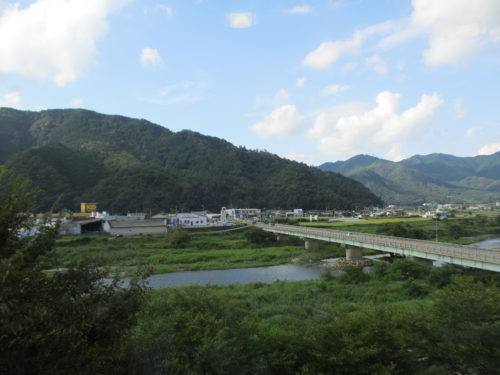
This first stop is more than just logistics; it's a microcosm of the modern Japanese road trip, where the journey's pauses are as enriching as the destinations themselves.
Day 2: Myths, Mountains, and Majestic Dunes
Day 2: A Castle in the Clouds and a Desert by the Sea

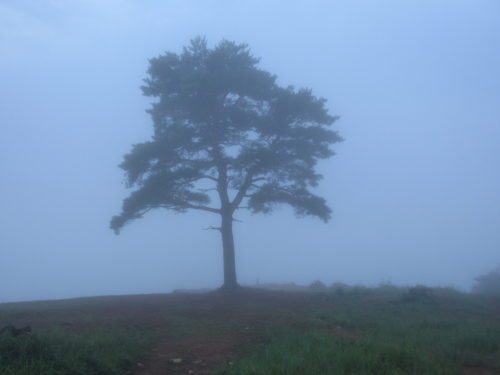
This is the day the adventure kicks into high gear. It begins with a pre-dawn mission to witness a breathtaking natural phenomenon and ends on the shores of a surreal landscape that defies all expectations of Japan. Prepare for a day of epic sights and unforgettable experiences.
Morning Ascent: Takeda Castle Ruins, the "Machu Picchu of Japan"
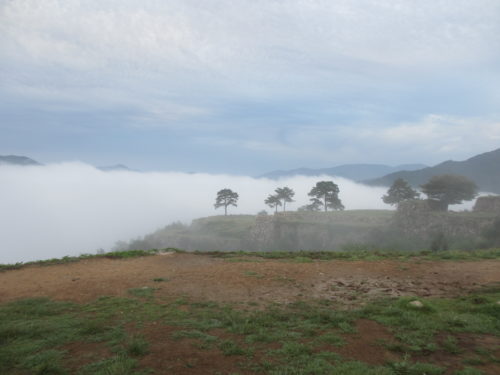
Perched atop a 353-meter peak, the Takeda Castle Ruins are all that remain of a formidable 15th-century fortress. While the castle itself is long gone, its magnificent stone foundations trace a silhouette against the sky, earning it the nickname "the Machu Picchu of Japan." But its true fame comes from a more ethereal phenomenon: the unkai, or "sea of clouds."
The Mission: Chasing the Unkai On crisp autumn mornings, a thick blanket of fog often fills the valley below, making the castle ruins appear to float magically on a sea of white clouds. Witnessing this is the ultimate prize for any visitor, but it requires planning and luck. The optimal conditions for seeing the
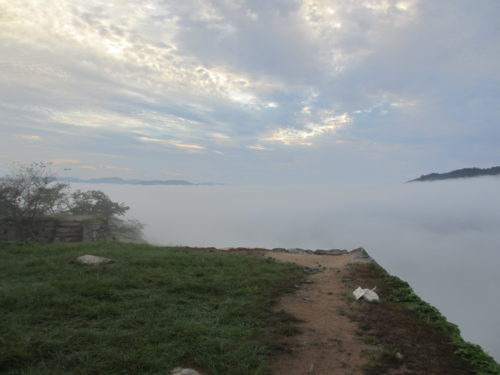
unkai are :
- Time of Year: September through November is the peak season, though it can occur at other times.
- Time of Day: From sunrise until around 8:00 am. This is why an early start is non-negotiable.
- Weather: A clear, calm day following a day with high humidity or a significant temperature drop between day and night.
The Insider Tip: The View from Ritsuunkyo While you can climb directly to the castle ruins, the most iconic photographs—the ones that show the entire castle floating on the clouds—are taken from the Ritsuunkyo viewpoint on the slopes of a mountain opposite the castle. A dedicated parking lot at Ritsuunkyo is your starting point. From there, a trail leads up to several observation decks. The first decks are just a short walk, but for the best, highest vantage point, you'll need to hike for about 30-40 minutes to Observatory Deck #1. This pre-dawn hike, guided by a flashlight, is an adventure in itself, with the reward being one of Japan's most sublime views.
Practicalities for Your Ascent

- Opening Hours: The castle's hours change seasonally to accommodate the unkai viewing. Be sure to check the official website for the latest times. Generally, they are:
- March - May: 8:00 am - 6:00 pm
- June - August: 6:00 am - 6:00 pm
- September - November: 4:00 am - 5:00 pm
- December - January 3: 10:00 am - 2:00 pm
- The site is closed from January 4 to the end of February.
- Admission: The entrance fee is JPY 500 for adults.
- What to Wear: The climb can be steep and the paths uneven. Proper hiking shoes are essential. High heels are forbidden on the castle grounds to protect the historic stonework. Even in autumn, it can be cold before dawn, so dress in layers and bring a flashlight and rain gear just in case.
Afternoon Adventure: The Tottori Sand Dunes

After the ethereal beauty of Takeda Castle, the afternoon brings a dramatic shift in scenery. Driving north towards the coast, you'll arrive at one of Japan's most surreal and unexpected landscapes: the Tottori Sand Dunes (Tottori Sakyu). Stretching for 16 kilometers along the coast of the Sea of Japan, this is the country's largest sand dune system, a vast, undulating desert landscape created over thousands of years by sediment carried from the Chugoku Mountains and sculpted by the sea winds.
Choose Your Thrill: Activities on the Dunes The dunes are more than just a sight to behold; they are a natural playground offering a range of activities for every type of traveler.
- For the Relaxed Explorer: Camel Rides The most iconic way to experience the dunes is on the back of a camel. The "Rakudaya" facility offers short rides that provide a unique perspective of the sandy expanse against the blue sea. It's a fantastic photo opportunity and a gentle way to soak in the atmosphere. A ride with a photo is around JPY 650, while a short walk costs about JPY 1,600 for a single rider.
- For the Adrenaline Seeker: Sandboarding For a more exhilarating experience, try sandboarding. The Tottori Sakyu Sand Board School offers lessons for all skill levels. You can slide down the steep, 30-degree slopes on a board, with the soft sand providing a forgiving cushion for falls. A two-hour session, including instruction and all rental gear, typically costs around JPY 4,500. It's a unique thrill you can only find here in Japan.
Other activities like paragliding, fat biking, and even "sand yoga" are also available, making the dunes a versatile destination for outdoor enthusiasts.
The Sand Museum: Ephemeral Art by the Sea

Just a short walk from the dunes is a world-class attraction that is utterly unique: The Sand Museum. This is the world's only indoor museum dedicated exclusively to large-scale sand sculptures. Each year, a team of elite sand sculptors from around the globe is invited to create a new exhibition based on a "Travel Around the World in Sand" theme, with past exhibitions focusing on countries like Germany, the USA, and regions like Southeast Asia.
The sculptures are astonishingly detailed and massive in scale. What makes the experience so profound is its inherent impermanence. At the end of each exhibition period (typically running from spring to early January), the magnificent artworks are allowed to crumble, returning to simple sand before the next exhibition is created. This cycle reflects the Japanese aesthetic of
mono no aware—a gentle, poignant awareness of the transience of all things. It's a must-see complement to the natural wonder of the dunes. The museum is generally open from 9:00 am to 5:00 or 6:00 pm, with an admission fee of JPY 800 for adults.
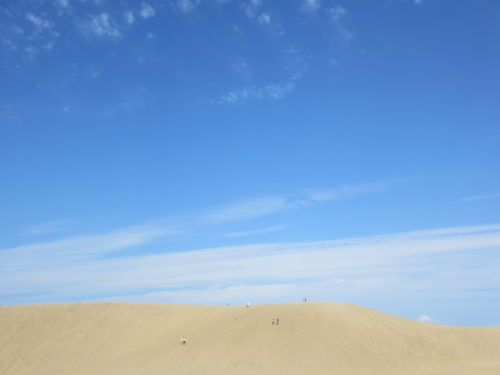
Evening Drive to the Land of the Gods
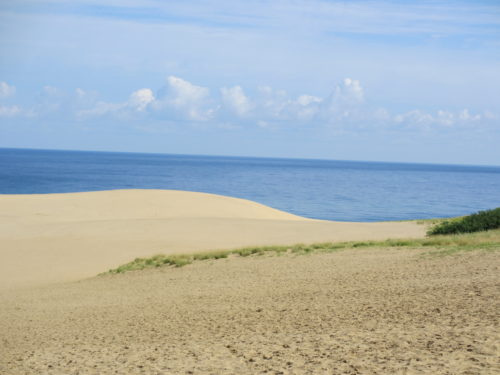
As the sun begins to set over the Sea of Japan, casting long shadows across the dunes, it's time to begin the final leg of the day's journey. The drive from Tottori to the Izumo region in neighboring Shimane Prefecture is a beautiful coastal route. It's a time for reflection, processing the day's incredible contrast between a floating castle in the mountains and a vast desert by the sea, as you head toward the sacred land where Japan's ancient gods await.
We recommend staying around Izumo Station.There are restaurants etc.
Day 3: A Divine Encounter and the Journey Home
Day 3: In the Realm of the Gods and the Reflective Drive Home
The final day of your road trip is dedicated to a place of immense spiritual significance, a site that lies at the very foundation of Japanese mythology. After a morning spent in the presence of the gods, you will begin the scenic journey back to Osaka, filled with the memories of a Japan few travelers get to see.
Morning Pilgrimage: Izumo Taisha Grand Shrine
Izumo Taisha (officially Izumo Oyashiro) is not just another shrine; it is one of the oldest and most important Shinto shrines in all of Japan. Its origins are lost in the mists of legend, predating written history. The shrine is dedicated to the deity
Okuninushi no Okami, a central figure in the Kojiki, Japan's oldest mythological text. Okuninushi is revered as the creator of the land of Japan and, most famously, as the deity of enmusubi.
What is Enmusubi? While often translated simply as "marriage" or "matchmaking," enmusubi has a much broader and more profound meaning. It refers to the "binding of relationships" or the forging of good connections of all kinds. People come here to pray not only for a romantic partner but also for strong bonds with family, friends, and business colleagues. This universal appeal makes a visit to Izumo Taisha a deeply meaningful experience for anyone.
How to Worship at Izumo: A Unique Tradition
Visiting a Shinto shrine involves a series of simple, respectful rituals. At Izumo Taisha, the process is mostly standard, but with one very special distinction.
- The Approach: You begin by bowing once before passing through the giant torii gates. Remember to walk along the sides of the main path, as the center is reserved for the deities.
- Purification: Before entering the main grounds, stop at the temizuya (water basin). Take the ladle in your right hand, fill it with water, and pour some over your left hand. Switch hands and wash your right. Switch back to your right hand, pour water into your cupped left hand, and rinse your mouth (do not drink from the ladle or spit back into the basin). Finally, hold the ladle vertically to let the remaining water run down and cleanse the handle.
- The Prayer: This is where Izumo is unique. At most Shinto shrines, the prayer ritual is "two bows, two claps, one bow." Here at Izumo Taisha, the custom is "two bows, FOUR claps, one bow". The four claps are said to be for yourself and for your current or future partners and relationships, doubling the blessing.
The Sights and Spirit of the Shrine Grounds
The atmosphere at Izumo Taisha is ancient and powerful. The vast grounds are dotted with impressive structures and meaningful symbols.
- The Giant Shimenawa: The most visually stunning feature is the enormous sacred rope, or shimenawa, hanging at the Kagura-den (Kagura Hall). This is one of the largest in Japan, weighing a staggering 5.2 tons and measuring 13.6 meters in length. But its size is only part of the story. This rope is a testament to community and tradition. It is painstakingly crafted over more than a year by a dedicated group of artisans in the town of Iinan, using a special variety of rice straw grown specifically for this purpose. Every five to six years, the old rope is retired and a new one is brought to the shrine in a grand procession. Standing beneath it, you can feel the weight of not just the straw, but of centuries of faith and craftsmanship.
- The Main Hall (Honden): The current Main Hall, a designated National Treasure, stands at 24 meters tall, but ancient records suggest it was once much higher, perhaps reaching 48 meters. Built in the oldest style of shrine architecture, Taisha-zukuri, its sheer scale and austere beauty evoke a sense of awe. While visitors cannot enter the innermost sanctuary, its imposing presence is the spiritual heart of the complex.
- The Rabbits of Inaba: As you explore the grounds, you will notice dozens of charming statues of rabbits in various poses. These commemorate the famous myth of the "White Hare of Inaba," in which a compassionate Okuninushi saved an injured rabbit, a story central to his character as a benevolent deity.
The Reflective Drive Back to Osaka
After immersing yourself in the sacred atmosphere of Izumo Taisha, it is time to begin the journey home. The drive back to Osaka takes approximately four to five hours. This is not a rushed retreat but a final, reflective chapter of your adventure. The highway carries you back through the landscapes you've explored—from the coast of the Sea of Japan, through the mountains of Chugoku, and back toward the urban expanse of the Kansai region. It's the perfect time to process the incredible sights of the past three days and to carry the spirit of "Secret Japan" back with you.
Planning Your Japan Sea Coast Road Trip: Itinerary & Budget
A great adventure is born from a great plan. This section consolidates the key logistical details of your 3-day road trip into easy-to-reference tables, transforming an inspiring idea into a practical, bookable journey.
The Road is Calling: Start Your Own Adventure
This itinerary is more than a list of places and a schedule. It is a template for discovery, a call to venture beyond the familiar. It’s about the feeling of freedom as you grip the steering wheel on an open coastal road, the quiet awe of watching a castle float on a sea of clouds, the connection with ancient myths in a sacred forest, and the sheer joy of finding the unexpected.
As someone who has traded a conductor's watch for a steering wheel, I can tell you that the real magic of Japan is often found in the spaces between the destinations—in the spontaneous stop at a scenic overlook, the conversation with a shopkeeper in a small town, and the shared silence while watching a perfect sunset. This journey is designed to create those moments.
I hope this guide has ignited your curiosity and given you the confidence to explore this incredible part of the country. The road is waiting.
Ready to start planning? The first step is choosing your ride. Explore a fleet of unique Japanese cars and let's build your perfect road trip map together. Your own secret Japan awaits.

